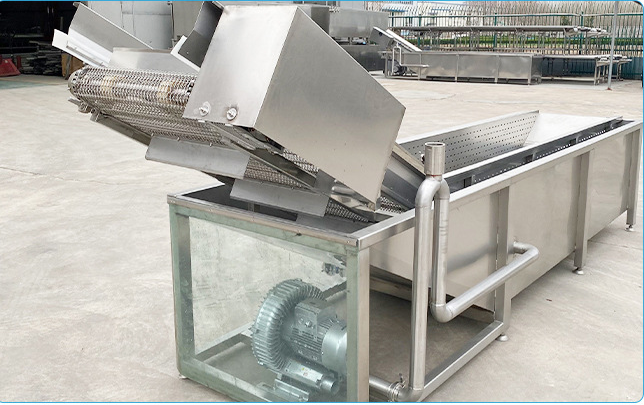Innovative Housing Solutions for Contemporary Pig Farming
Dec . 09, 2024 23:48 Back to list
Innovative Housing Solutions for Contemporary Pig Farming
The Modern Pig Pen Innovations for Sustainable Farming
As global demand for pork continues to rise, the traditional methods of pig farming are evolving. The modern pig pen has undergone significant transformations in design, technology, and sustainability practices, ensuring that pig farming is not only more efficient but also more humane and environmentally friendly.
Innovative Design
The architecture of the modern pig pen emphasizes the well-being of the animals. Traditional pig pens were often cramped, putting the health of the animals at risk. Today’s designs focus on providing adequate space for each pig, allowing them to exhibit natural behaviors like rooting, socializing, and exercising. Modern pens often utilize modular designs, which can be expanded or modified according to the number of pigs and their different growth stages.
These contemporary pens incorporate features such as improved ventilation systems, natural lighting, and thermal insulation to enhance the living conditions for the pigs. Ensuring a comfortable environment reduces stress levels in pigs, leading to better health and increased productivity.
Advanced Technology
Technology plays a crucial role in the management of modern pig farming. Automated systems for feeding, watering, and climate control are becoming standard. For example, precision feeding systems utilize sensors to deliver the exact amount of feed required by each pig, minimizing waste and improving growth efficiency.
Moreover, the use of data analytics allows farmers to monitor the health and behavior of their pigs in real-time. Wearable devices can track vital signs and activity levels, alerting farmers to any potential health issues before they escalate. This technology not only enhances animal welfare but also enables farmers to make data-driven decisions that can improve their overall yield.
Sustainable Practices
modern pig pen

Sustainability is at the heart of modern pig farming. The environmental impact of traditional pig farming practices has often been criticized, particularly concerning manure management and water usage. In response, innovative solutions have emerged.
Modern pig pens are often designed with integrated waste management systems. For instance, anaerobic digesters can convert pig manure into biogas, which can then be used as a renewable energy source for the farm. This not only reduces the carbon footprint of pig farming but also provides an additional revenue stream for farmers.
Water conservation techniques, such as rainwater harvesting and water recycling systems, are increasingly being implemented. These systems allow for substantial reductions in water usage, which is particularly vital in regions facing water scarcity.
Animal Welfare Considerations
The modern pig pen is also a reflection of a growing awareness concerning animal welfare. Many consumers are more conscious about the conditions in which their food is produced, leading to a demand for higher welfare standards in animal farming.
Features such as enrichment tools (toys, rooting materials, etc.) are now common in modern pig pens, helping to stimulate the pigs’ cognitive functions and reduce boredom-related behaviors. Additionally, regulations regarding space requirements and the prohibition of certain practices (like gestation crates) have been implemented in various regions, promoting a shift towards more humane farming practices.
Conclusion
The modern pig pen represents a significant advancement in pig farming, showcasing how innovation can lead to improved animal welfare, sustainability, and operational efficiency. By embracing new technologies and sustainable practices, farmers are not only meeting the growing global demand for pork but are also ensuring the well-being of their animals and the health of the environment. As the industry continues to evolve, the lessons learned from the modern pig pen will undoubtedly shape the future of agriculture, paving the way for a more sustainable and ethical food system.
In this way, the modern pig pen is more than just a structure; it's a testament to the progress in our approach to farming and a model for future agricultural practices. The journey towards sustainable pig farming is ongoing, but with innovations in design, technology, and conscientious practices, the modern pig pen is undoubtedly leading the way.
-
Hot Sale 24 & 18 Door Rabbit Cages - Premium Breeding Solutions
NewsJul.25,2025
-
Automatic Feeding Line System Pan Feeder Nipple Drinker - Anping County Yize Metal Products Co., Ltd.
NewsJul.21,2025
-
Automatic Feeding Line System Pan Feeder Nipple Drinker - Anping County Yize Metal Products Co., Ltd.
NewsJul.21,2025
-
Automatic Feeding Line System - Anping Yize | Precision & Nipple
NewsJul.21,2025
-
Automatic Feeding Line System - Anping Yize | Precision & Nipple
NewsJul.21,2025
-
Automatic Feeding Line System-Anping County Yize Metal Products Co., Ltd.|Efficient Feed Distribution&Customized Animal Farming Solutions
NewsJul.21,2025






